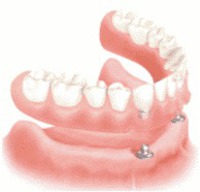Which Overdenture Attachment System?
Implant-supported overdentures (IODs) have become the new standard in the treatment of edentulous patients. The advantages of IODs over the conventional complete and partial removable dentures are well documented and include decreased bone resorption, reduced movement of the prosthesis and improved occlusion and aesthetics.[1] Along with these advantages, patient satisfaction has also increased significantly with the use of IODs.[2]
The increase in IODs, has caused an increase in different IOD attachment systems, each claiming advantages over the others. These differences can allow for selection based on clinical or patient situation. There are numerous clinical and in vitro studies exploring these claims and below you will find a summary of some of these studies, with the pros and cons of some of the IOD attachment systems.
|
|
Advantages |
Disadvantages |
|
Bar-Retained |
|
|
|
Ball & Socket |
|
|
|
Locator |
|
[1] Lambade D, Lambade P, Gundawar S. Implant Supported Mandibular Overdenture: A Viable Treatment Option for Edentulous Mandible. J Clin Diagn Res. 2014;8:ZD04-6 (PubMed)
[2] Krennmair G, Seemann R, Fazekas K, et al. Patient preference and satisfaction with implant-supported mandibular overdentures retained with ball or locator attachments: a crossover clinical trial. Int J Oral Maxillofac Implants. 2012;27:1560-8 (PubMed)
[3] Scherer MD, McGlumphy EA, Seghi RR et al. Comparison of retention and stability of implant-retained overdentures based upon implant number and distribution. Int J Oral Maxillofac Implants. 2013;28:1619-28 (PubMed)
[4] Watson G, Payne A, Purton D et al. Mandibular Overdentures: Comparative Evaluation of Prosthodontic Maintenance of Three Different Implant Systesm During the First Year of Service. Int J Prosthodont. 2002;15:259-266 (Article)
[5] Ma S, Tawse-Smith A, Thomson WM, et al. Marginal Bone Loss with Mandibular Two-Implant Overdentures Using Different Loading Protocols and Attachment Systems: 10-Year Outcomes. Int J Prosthodont. 2010;23:321-32 (Article)
[6] Cakarer S, Can T, Yaltirik M et al. Complications associated with the ball, bar and Locator attachments for implant-supported overdentures. Med Oral Patol Oral Cir Bucal. 2011;16:953-9 (PubMed)
[7] Fromentin O, Lassauzay C, Nader SA et al. Clinical wear of overdenture ball attachments after 1, 3 and 8 years. Clin Oral Implants Res. 2011;22:1270-4 (PubMed)
[8] Carkarer S et al. 2011
[9] Schneider AL, Kurtzman GM. Bar overdentures utilizing the Locator attachment. Gen Dent. 2001;49:210-4 (PubMed)
[10] Krennmair et al. 2012.

